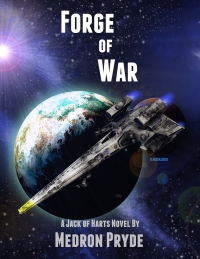Frostydale, is more than merely a little frosty. She’s a frozen ice ball of a planet that even Eskimos and Siberians think is a bit too cold to be comfortable in most of its technically habitable areas. But she is host to a true motherlode of natural resources that makes her people rich enough to build environment domes wherever they want. Even individual families can build their private paradises under snow-filled skies. I like it.
In Western Alliance space, cybers are a common sight. We fly taxis, starships, and fighters. Or we answer phone calls. We’re secretaries and legal consultants. We excel at any job that needs a flexible mind. Of course, we collect paychecks just like anybody else. That’s why a lot of companies use AIs to cut down on overhead. You don’t have to pay a computer to do the job it is built to do. Though the AI Rights crowd would love to change that.
America was growing powerful in the 1800s. It was no threat to the powers of Europe, but it had natural resources that never ran out. Sooner or later, it would eclipse Europe. The European branches of my family did not wish that to happen and concocted many schemes to stop it. There were many bullets in the guns aimed at America in those years. One of them was aimed at the Jeffersonian Republicans. That had many unintended consequences.
All of our trading is a cover for what we really do. You see, we do a lot of research, looking for stuff that most people don’t know about. And even here, I really can’t talk about it. Charles has a lot of questions, the kinds of questions our governments don’t want answered. So we’re looking for evidence. And if we happen to be someplace where somebody needs help, well we get right neighborly and help them. Makes for real good press coverage for all us Cowboys.
Pleasantdale is one of those ironic names given to worlds that are anything but. It’s a large, hot world with a thin, barely breathable atmosphere. And to top it off, it has horrible natural resources compared to other worlds in the system. Still, it was technically habitable without any need of terraforming to human norms when we discovered the system. Because of that, it actually has an impressive population. Not rich on a galactic scale, but, perhaps, pleasant.
 The Martian Affair on Amazon
The Martian Affair on Amazon Forge of War on Amazon
Forge of War on Amazon The Audacious Affair on Amazon
The Audacious Affair on Amazon Angel Flight on Amazon
Angel Flight on Amazon Angel Strike on Amazon
Angel Strike on Amazon Angel War on Amazon
Angel War on Amazon The Family Affair on Amazon
The Family Affair on Amazon The Thunderbird Affair on Amazon
The Thunderbird Affair on Amazon Wolfenheim Rising on Amazon
Wolfenheim Rising on Amazon Wolfenheim Emergent on Amazon
Wolfenheim Emergent on Amazon The Gemini Affair on Amazon
The Gemini Affair on Amazon